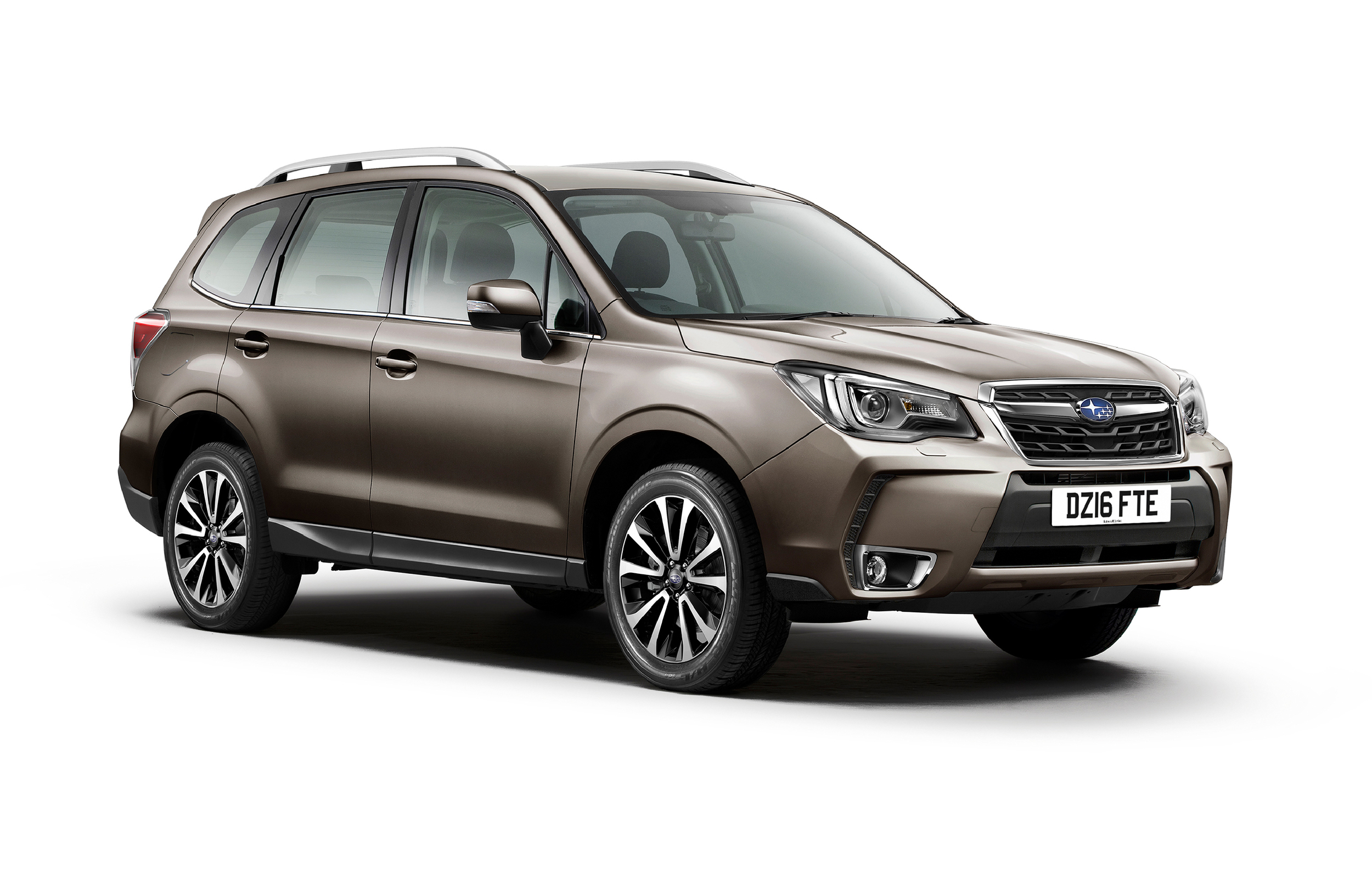

Subaru has facelifted its Forester, claiming improvements in safety, convenience, comfort and refinement.
At the front of the car, the Forester’s hexagonal grille has been updated with a new ‘wing’ motif grille mesh, while the front bumper has been reshaped and now features new L-shaped chrome trim adding ‘greater visual volume’ to the lower part of the Forester’s front end. The change is designed to emphasise the car’s relatively low centre of gravity, wide stance and ‘innate stability’.
The wraparound headlamps – retaining Subaru’s signature ‘hawk-eye’ shape – feature a new black base paint finish for a sharper appearance. The 2016 model is also fitted with new LED combination lamps at the rear. On the inside, new soft-touch materials and technologies have been introduced to further modernise the interior and introduce a higher-quality look and feel. New piano black and metallic trim joins higher-resolution TFT displays and new cloth and leather upholstery options – including a new brown leather option.
Thicker glass has been applied reducing the ingress of wind ‘rush’ and other noises into the cabin. The seals around the window frames in the doors use a new, more sound-absorbent material to further reduce noise levels. Additional soundproofing material has been added around the dashboard, particularly where the dashboard meets the base of the windscreen and in the front passenger foot well, minimising noise intrusion from wind rush and the engine, respectively.
New headlamp technologies includes LED lights with Adaptive Front Lighting System which allows the headlamps to rotate left or right into corners as the driver turns the wheel. By illuminating the road ahead in the direction in which the vehicle is traveling, the Forester’s night visibility is greatly improved, particularly useful in poorly-lit rural areas.
All existing safety equipment on offer is fitted as standard to every model in the Forester range, including twin front, side, curtain and knee airbags, Subaru Vehicle Dynamics Control (VDC; Subaru’s electronic stability control system) with trailer stability, and Subaru’s Symmetrical All-Wheel Drive technology.
Updated suspension settings at the front and rear ensure the car remains ‘comfortable and refined’ says Subaru, particularly over broken or choppy surfaces, while the adoption of a new steering gearbox quickens the steering ratio (from 15.5:1 to 14.0:1) to improve reactions to steering inputs.
The range of engines remains unchanged with a choice of three 2.0-litre horizontally-opposed four-cylinder engines – a 150 PS naturally-aspirated 2.0i petrol engine and a 147 PS 2.0D turbo-diesel unit and a 241 PS direct injection turbocharged (DIT) petrol unit, engineered for high power, responsiveness and efficiency. A six-speed manual transmission is fitted as standard to 2.0i and 2.0D models, with an optional Lineartronic CVT automatic transmission. Lineartronic is standard on XT models, equipped with the 241 PS DIT petrol engine.
In uneven or slippery road conditions, the all-terrain capability of the standard Symmetrical All-Wheel-Drive is enhanced further with the X-Mode on Lineartronic CVT models, a control system which includes Hill Descent Control and improves traction further over the outgoing model’s.
The upgraded Subaru Forester will go on sale in the UK next month. Pricing remains unchanged for all nine models in the line-up, with the range starting from £25,495 (on-the-road) for the 2.0i XE model and £26,995 for best-selling 2.0D XC models rising to £30,995 for high-powered 2.0 DIT XT versions of the car.
